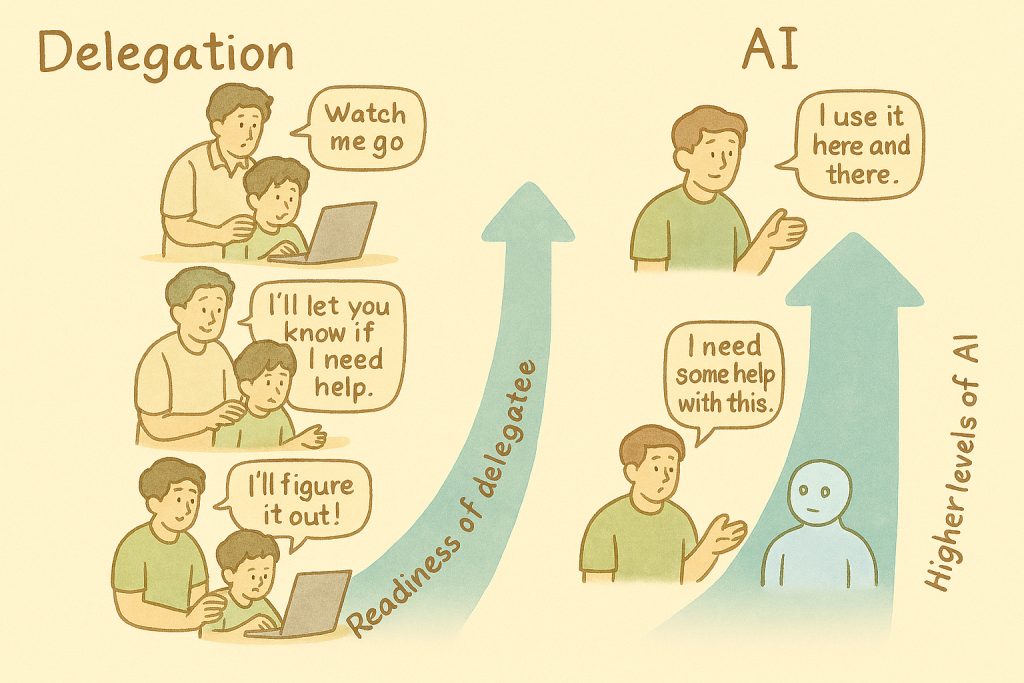Quite a few leaders, who have individual contributors reporting to them, tend to think that they are well connected with their team members. The daily interactions the leaders have with their team members creates this impression. Often there are surprises for the leaders, when they get down to performance reviews with their team members. This blog addresses the common belief that daily interactions are sufficient for the team’s success and well-being.
Your team plays a crucial role in delivering value to customers, aligned with the goals set by you and your organization. Communication with the team members is the key to translate the vision into a deliverable for the customer. As a leader you must deliver value to customer, that goal would be met by the daily interactions. As a leader you also must grow your team, and you will fall short on this front. The Daily interactions go a long way to make the delivery happen, but 1:1 meeting with your team is essential to help your team members grow. Growing your team members is essential to be able to continue delivering value to customer.
Frequently, during my interaction with leaders, I ask how frequently and how do they conduct the 1:1 with the team members. Most of the time the responses are along these lines:
- We are in touch continuously
- We sync up at least once during the work day and often more than that
- I get to hear the progress / issues from them, instantaneously
- When we are at work we often meet up at lunch or tea breaks
- We follow Scrum and have Daily Scrums and catch up if needed
- I am very approachable and my team members reach me for updates/obstacles.
Daily Interactions
Daily interactions are vital for making progress towards project goals. They are always task oriented – could be spontaneous, could be in a formal project review meeting, in the hallway, at breaks or over email and chat.
These interactions could be with multiple team members simultaneously. Meeting multiple team members enhances team dynamics and collaboration and alignment to the task at hand.
The updates are quick and typically focus on day-to-day operations and issues, that are addressed promptly.
These interactions provide an opportunity to appreciate the team’s/team member’s contribution and are a source of motivation. It helps in recognition and encouragement.
It will also help in course corrections, which should be done in a way that it does not demotivate them. This can be achieved by focus on the work/task and not the person. One must be careful to avoid individual negative feedback in the open, which is not the case with individual appreciation in public.
1:1 Meetings
1:1 meeting should focus on individual development rather than immediate tasks or projects. The basis should be the objectives, goals or any artifact used to define the outcome and desired behaviors for the individual.
These meetings are more structured and formal. The focus in on the long-term goals, career development and professional and personal growth.
There is personalized attention and confidential environment where the team member can openly share his concerns and views. This goes a long way in building trust.
These sessions can be used for giving feedback, mentoring, and coaching the team members. The leader can share both the positives and negatives, which may have been covered in the daily interactions. The difference being that in the 1:1, the focus shifts from the task to the individual.
Managers must provide appreciation and constructive feedback in daily interactions as well as the 1:1 meeting. The daily interactions provide a means of timely appreciation, the same can be formally reiterated in the 1:1 meeting to recognize the effort and provide appreciation. It helps reinforce desired behaviors and provide feedback for improvement.
Avoid giving negative feedback during daily interactions when multiple team members are present. The feedback can be shared with the team member in 1:1 meeting, this will ensure that feedback meant for the team member will not be construed as a course correction instruction for the task at hand.
I remember an instance where a team member disputed the “improve writing test cases” feedback from his manager in his performance review. Team member felt that he had not received that feedback ever and would have benefited by that. The manager thought that he had given that feedback clearly. It turned out that the feedback was given in a daily interaction and with multiple team members present. It was construed by the team member to be an instruction from the manager.
You should elicit the team members concerns and challenges and encourage the team member to address them on their own, providing the help and support that is needed. It is a good practice to touch upon the Work Life harmony, see how he or she is doing and provide any help. From here you can segue into the individual’s areas of interest at a personal level. Focus on understanding him or her as a person and this will help building a good rapport.
It is also an opportunity for the leader to seek feedback from the team member, this feedback may not be forthcoming but will slowly flow, as the trust builds. Start by asking – is there anything that I could do or not do to help you perform better?
Frequency and Duration
This is a question that often surfaces, once the leaders understand the benefits of the 1:1. The optimum frequency is monthly once and that can be adjusted based on the interval at which the goals and objectives are set and reviewed.
One simple technique is to make a list of all your team members and start having the 1:1 with a team member per week or fortnight. Once you reach the end of the list, review and adjust as needed, and start again at the top.
Conclusion
Daily interactions and 1:1 meetings are both required to make the delivery happen and to grow your team members. Daily interactions are task/work focused and help ensure the team progresses towards making the delivery. 1:1 meeting is individual focused where one can see how one is contributing towards the team’s goals and how one could improve and grow in their career. Have a judicious mix of the two and leverage both to lead your team to success.
Would like to hear your experiences on the same – how do you balance your daily interactions and 1:1 meeting?
Image Courtesy: Informal Meeting Vectors by Vecteezy





4 Responses
Hi Shiv, I can relate to this, it is a real different world.
I was invited a few times to address students appearing for CET exams as an industry person and found it challenging to connect with them. I was able to connect somewhat as one of their concern was what if they do not get into a good college, which I was able to address by sharing real life examples.
Thanks Vasu. College “brand” no doubt helps early on in work life – corporate doors open more easily. But down the line, it is people’s motivation and track record that helps build careers. I am sure we have all seen examples affirming this. I have stressed with the mentees that I work with. An aside, the mentorship program I am involved in spans 4-5 months and so, I have had time to work on the “connect”! Yes – takes time and effort.
Hi Shiv – very well written – thanks for the write-up.
Many years ago I was a volunteer mentor for a couple of youth as part of Dream A Dream’s life skills mentoring program. This was in person mentoring where the mentee and I would meet periodically (usually on a weekend) and discuss general topics. There was no prescribed structure though all mentors did go thru a few hours of in person training. Based on that experience I can corroborate that it takes time for the mentee to open up, especially in that case given their lack of confidence in expressing in English which was the recommended language for communication. Switching to Tamil (in one case where the mentee was from Tamil Nadu) helped.
Can also relate well to your point on swings in mood and engagement level of the mentee and the need for mentor to shift gears accordingly.
I am sure the mentees are benefiting a lot from your vast and varied experience – hope you will come back to mentor more such students after you complete the current mentorships and possibly take a break!
Thank you, Bhasker!